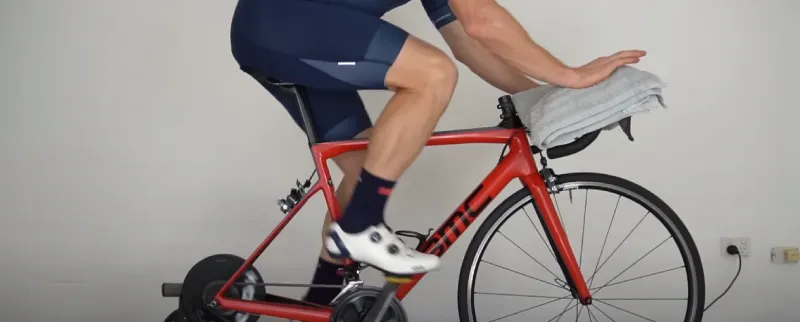The most common and uncomfortable condition that can arise for cyclists is numb toes. This irritating sensation can make your ride miserable and bring you to a complete halt if severe enough. If your cleats are positioned incorrectly, you may put pressure on the wrong parts of your feet, leading to numbness and discomfort.
Improper cleat position is often the primary cause of numb toes while cycling. For maximum comfort, the center of the cleat (where the pedal spindle connects with the cleat) should ideally be placed just behind the ball of the foot. Some experts suggest a gap of up to 5mm for even more comfort.
In this blog post, we’ll explore the effects of numb toes, why getting your cleat position right is essential, and some tips for making sure you’re riding comfortably.
Numb Toes Cycling Cleat Position: 7 Risky Mistakes
Cycling is a great way to stay healthy, but it can be uncomfortable if you experience numb toes. This is a common problem among cyclists, but this can happen for various reasons. Here are some causes of numb toes while cycling:
Poor Fitting Shoes
One of the common reasons for numb toes while cycling is ill-fitting shoes. A pair of shoes that is too tight or loose can put pressure on your toes, leading to numbness. Make sure you wear the right size of cycling shoes that are designed specifically for this activity.
Incorrect Bike Fit
Another reason for numb toes is an incorrect bike fit. When the bike isn’t correctly adjusted according to your height, arm length, and leg length, it can cause nerve pressure on the foot, leading to numbness.
Poor Cleat Placement

Improperly placed cleats can misalign your feet, leading to discomfort and numbness. Ensure the cleats are set correctly for a comfortable ride.
Incorrect Socks
Many bikers need to pay more attention to the importance of the right socks while cycling. Socks that are too thick or too thin can cause pressure on your toes, causing numbness. Wear socks that fit snugly, wick moisture, and don’t bunch up.
Poor Cycling Technique
You may experience numb toes because of an incorrect cycling technique. When cyclists pedal too hard, pushing too much weight on the balls of their feet, it can cause numbness. Maintain proper mechanics and pedal technique by keeping your weight on your arches and heels.
Misalignment of the Cleat
The angle at which your cleats are aligned also affects the numbness of your toes. The angle should allow your toes to be pointed slightly down, helping balance and stability.
Poor Circulation or Nerve Issues
Numb toes can also be caused by poor circulation or nerve issues. You can avoid this by doing proper warm-ups, exercising regularly, and maintaining a healthy diet.
Plantar Fasciitis Causes toe Numbness
Plantar fasciitis typically affects the heel and arch of the foot, causing pain and discomfort. However, the condition can sometimes lead to referred pain or nerve irritation that may manifest as symptoms like toe numbness. This toe numbness is often a result of the nerve pathways being affected by the inflammation and tension associated with plantar fasciitis.
Symptoms Of Cleats Too Far Back
Cleats positioned too far back on your cycling shoes can lead to discomfort and inefficiencies while riding. Here are some common symptoms that may indicate your cleats are placed too far back:
- Toe Numbness: Placing the cleats too far back can put excessive pressure on the front of your foot, leading to numbness in the toes because of restricted blood flow.
- Foot Pain and Numbness: Incorrect cleat positioning can result in foot pain, numbness, and discomfort while cycling, potentially causing sore feet, cramps, and referred pain in the back.
- Arch Pain: Incorrect cleat positioning can cause arch pain as the foot is not adequately supported, leading to strain and discomfort in the arch area.
- Knee Pain: Misaligned cleats can result in knee pain, especially if they are positioned too far back, altering the natural biomechanics of your pedal stroke.
- Decreased Power Output: Having cleats too far back can reduce power transfer efficiency, making it harder to generate power during pedaling strokes.
- Instability: Placing cleats too far back can affect the stability of your foot on the pedal, potentially leading to a less secure connection and reduced control over your bike.
7 Risks of Numb Toes Cycling Cleat Position
Numb toes are a warning sign that something is not right with your cycling cleat position. There are many risks associated with numb toes because of improper cleat placement, which include:
Loss of Balance and Control
Numb toes can affect your balance and control while cycling. When your toes are relaxed, you may not feel the pedals firmly and may lose grip, leading to losing control. This can be dangerous, especially when cycling at high speeds or on uneven terrain.
Discomfort and Pain
Numb toes can be uncomfortable and painful, leading to a lousy cycling experience. Pain in your toes may mean you have to cut your cycling session short, making it less satisfying.
Increased Risk of Injury
Numb toes increase the risk of leg injuries. You may accidentally injure yourself while cycling, causing severe medical implications. Your numb toes may cause you to lose balance and fall, which could lead to more severe injuries.
Negative Impact on Overall Cycling Performance
Numb toes can hurt your overall cycling performance. It affects your timing, power, and ability to control the pedals, reducing the momentum you need for smooth cycling.
Nerve Damage
Constant numbness in your toes can lead to permanent nerve damage. This can cause long-term medical issues, making it difficult for you to enjoy your cycling hobbies.
Loss of Sensation
Numb toes can sometimes contribute to a lack of sensation, making it difficult to feel your feet firmly. This loss can cause more severe issues; for instance, if you are required to pedal and cannot feel it, you might cause an accident while adjusting your position on the pedals.
Risk of Falls and Accidents
Finally, numb toes while cycling increases the risk of falls and accidents. Numb toes can cause you to lose control of your bike, making it difficult to maintain balance and avoid hazards on the road. This could cause an accident, potentially even more harm.
10 Helpful Prevent Tips and Solutions

Numbness in the toes is a shared cycling issue, which can be caused by improper cleat placement. To avoid numb toes while cycling, it is essential to ensure that your cleats are correctly positioned. You can do so by implementing the following tips:
- Correct Cleat Position: Align your cleats so that the ball of your foot is directly over the pedal spindle. This optimizes power transfer and minimizes strain on your knees. Experiment with slight adjustments to find the most comfortable and efficient position for your feet. Ensure that your cleats are securely fastened to your shoes to prevent any unexpected movement like hot foot.
- Proper Cleat Alignment: Aligning your cleats correctly will help to disperse the pressure on your feet while cycling. When your cleats are not aligned correctly, your feet must work harder to maintain proper posture, increasing the likelihood of numbness in your toes.
- Adjust Cleat Forward or Backward: Depending on foot type and angle, it may be necessary to adjust the cleat forward or backward to improve alignment. This may also improve power output while cycling.
- Position Your Toes Correctly: Ensure that your cleats are positioned with your toes slightly pointed downwards for the best results.
- Check Shoe Fit: Ensure you have properly fitting shoes to help improve support and eliminate movement while cycling.
- Use Inserts or Insoles: Proper inserts or insoles can help redistribute weight and appropriately align your feet and ankles, reducing numbness.
- Wear Correct Socks: Investing in cycling-specific socks made of breathable materials will absorb and wick the moisture away from your feet. Wearing the right socks and adequately fitting cycling shoes reduces pressure points contributing to numb toes.
- Stretch and Warm-Up: Proper stretching and warm-up exercises can help to condition your muscles, increase circulation, and reduce tension and pressure on your feet during cycling.
- Rest and Recovery: ensure that you give your body the proper time needed for rest and recovery after cycling. This approach can help you avoid any long-term numbness or inflammation issues.
- Consult a medical professional: If your numb toes persist, it’s essential to seek medical advice to diagnose any underlying medical conditions or injuries, such as neuropathy, which may be the root cause of the numbness.
- Exercises and stretches: Incorporating specific exercises and stretches that improve circulation, nerve function, and foot strength can ease numb toes during and after cycling.
Conclusion
Numb toes while cycling can be a frustrating and uncomfortable experience, but it can be easily prevented with proper cycling cleat positioning. By adjusting your cleats and ensuring your feet are correctly aligned on the pedals, you can enjoy a more comfortable and safer ride on the road.
Remember, cycling is a fun experience, so do not let numb toes hinder your next adventure. If you struggle to find the correct position or are experiencing ongoing discomfort, seek professional help. Above all, prioritize your comfort and safety on the road, and you’ll enjoy all the incredible benefits of cycling.
FAQs
How Do I Stop My Toes From Going Numb While Cycling?
Numbness in the feet is a common problem for cyclists wearing narrow or poorly fitted shoes. Blood circulation is restricted, which can be eased by metatarsal button additions. These pads are placed in the shoes at the point where the ball is on the footrests. Holz recommends cyclists should ensure their shoes fit properly to avoid numbness and tingling in the feet.
When Should I Be Worried About Numbness In My Toes?
Numbness of the toes is a common symptom of diabetes. Consult your healthcare provider if you experience it frequently. Symptoms that should cause you to seek emergency medical attention include muscle weakness, making it difficult to balance or walk.


